When we look at the Hisense E7NQ PRO in everyday use, it is immediately apparent that this is a television designed with a broad range of viewers in mind. The picture, although not breathtaking at first glance, gains a lot after proper calibration. The colours appear more natural, and a brightness level of around 500 cd/m² makes it comfortable to watch in a sunlit living room. The wide viewing angles offered by the IPS panel are an additional plus – we no longer have to fight for the best spot on the sofa. Dolby Vision can enhance the overall experience, and in SDR mode, the television delivers a truly pleasant image. Sports and gaming fans will find even more reasons to be satisfied here. High refresh rates (144 Hz) guarantee smooth ball movements on the pitch, while low latency, VRR, ALLM, and compatibility with G-Sync and Dolby Vision in games cater to those who value responsiveness and immersive gaming experiences. Because of all this, the E7NQ PRO becomes an interesting proposition for computer gamers as well. The VIDAA system works quite well – there are plenty of applications, although it lacks music-specific ones like Spotify or Tidal. However, you can expect recording, AirPlay, mirroring, and decent cooperation with wireless devices. Yes, there are certain shortcomings and imperfections – especially regarding subtitle support from USB or perfect management of brightness and contrast, and the absence of HGIG may disappoint the most demanding gamers. When we gather all the impressions and experiences, the E7NQ PRO emerges as a device that will perform well in many situations. It has its advantages – such as wide viewing angles, pleasant images after calibration, numerous additional functions, and excellent motion fluidity in sports or games. At the same time, it is important to remember that this is not a television intended for those seeking perfect experiences for evening viewings in total darkness. In low lighting, the deficiencies in contrast and black levels become more pronounced, so we suggest that individuals who primarily plan evening screenings look for alternatives among competitors. Nevertheless, as a versatile solution for everyday use – from watching television in a bright living room to playing console and computer games – the E7NQ PRO performs really solidly.
- Matching (Score)
- Our verdict
- TV appearance
- Where to buy
- Contrast and black detail
- HDR effect quality
- Factory color reproduction
- Color reproduction after calibration
- Smoothness of tonal transitions
- Image scaling and smoothness of tonal transitions
- Blur and motion smoothness
- Console compatibility and gaming features
- Input lag
- Compatibility with PC
- Viewing angles
- TV efficiency during daytime
- Details about the matrix
- TV features
- Apps
- Playing files from USB
- Sound
Hisense E7NQ PRO vs PHILPS PUS9060
Direct compare
The One 2025 / PUS9060 / PUS9000

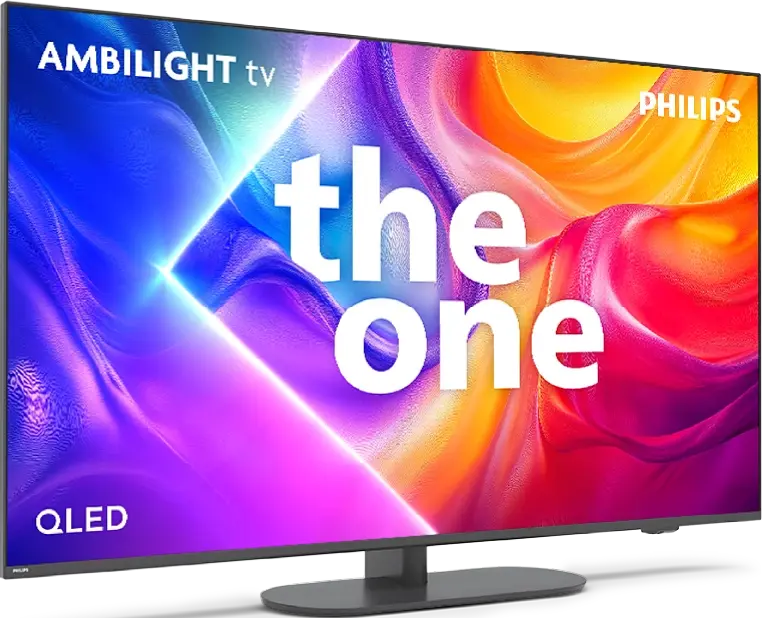
Panel type: LCD IPS
Resolution: 3840x2160
System: VIDAA
Model year: 2024
Complete the survey to find out the result

Panel type: LCD VA
Resolution: 3840x2160
System: Titan OS
Model year: 2025
Complete the survey to find out the result

Overall rating
7.0
6.8
Movies and series in UHD quality
6.4
6.7
Classic TV, YouTube
6.3
6.5
Sports broadcasts (TV and apps)
6.6
6.6
Gaming on console
8.0
8.4
TV as a computer monitor
7.6
8.8
Watching in bright light
6.2
6.0
Utility functions
8.9
6.3
Apps
7.7
6.2
Sound quality
7.0
6.6
Complete the survey to find out what fits your preferences
Advantages
Wide viewing angles thanks to the IPS panel
Good colour potential after calibration
High refresh rate (144 Hz), VRR, ALLM and G-Sync for gamers
Support for Dolby Vision
A considerable number of additional features (recording, AirPlay, mirroring)
Support for key audio formats (Dolby Atmos, DTS:X)
Relatively low input lag
VA matrix with very good native contrast
Ambilight TV system, which enhances perceived contrast
Support for dynamic HDR formats: Dolby Vision and HDR10+
Great for gamers: 4K 120/144 Hz support, VRR, ALLM, HGiG, G-Sync Compatible
Low input lag
Very good compatibility with PCs
Support for multiple audio formats - Dolby Atmos and DTS
Illuminated remote control with numeric keypad
Disadvantages
Average contrast and black level
Issues with subtitle playback from USB
Missing support for HGIG
Brightness management issues in HDR in some scenes
Unavailability of some popular music applications (Spotify, Tidal)
The Titan OS operating system can be underdeveloped
Limited number of applications
Average viewing angles
Lack of television functions (Recording to USB, PIP, Audio-only mode)
Infrared remote control (must be aimed at the screen)
Our verdict
Philips PUS9000 is proof that the manufacturer not only keeps a finger on the pulse but also listens attentively to its users. In the latest iteration of this popular series, there is a noticeable progress – especially compared to the previous generation that we had the opportunity to test. The use of a VA panel has brought a significant improvement in black levels, which finally presents itself at an acceptable level. A brightness of 500 nits does not disappoint even in sunlit rooms, and support for a wide range of HDR formats – including Dolby Vision and HDR10+ – complements the image of a well-prepared device. Additionally, the support for spatial audio technologies such as Dolby Atmos and DTS only enhances the positive impression, especially since the presence of all the aforementioned formats is not a given, even in the priciest models of 2025. But what truly sets this model apart from the competition is the Ambilight system. The multicoloured backlighting not only makes a visual impression – in a darkened room, it can enhance perceived contrast and completely transform the experience of watching a film or series. The gaming mode also deserves recognition. 144 Hz, low input lag, variable refresh rate, G-Sync compatibility, and Game Bar function – everything one could expect from a device designed with consoles and PC in mind. Unfortunately, not everything works perfectly. The Titan OS system, while operating relatively smoothly, still suffers from shortcomings – many popular applications are lacking, minor bugs appear, and the overall experience can be somewhat clunky in everyday use. Moreover, the remote, despite its modern appearance, still uses infrared and requires aiming at the television. What a pity.
So, who is the PUS9060 for? For those who want to immerse themselves in an evening session with impressive Ambilight, game on consoles, and stream content from external devices. In such a scenario, “The One” may indeed turn out to be "the one" – especially since its price is not off-putting on release day.
TV appearance




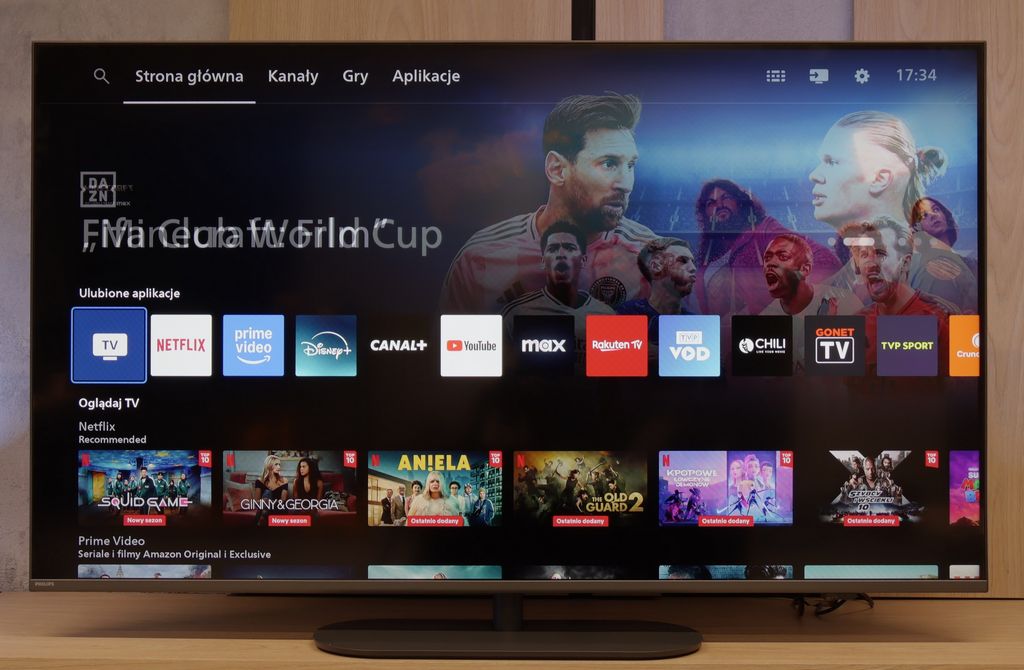
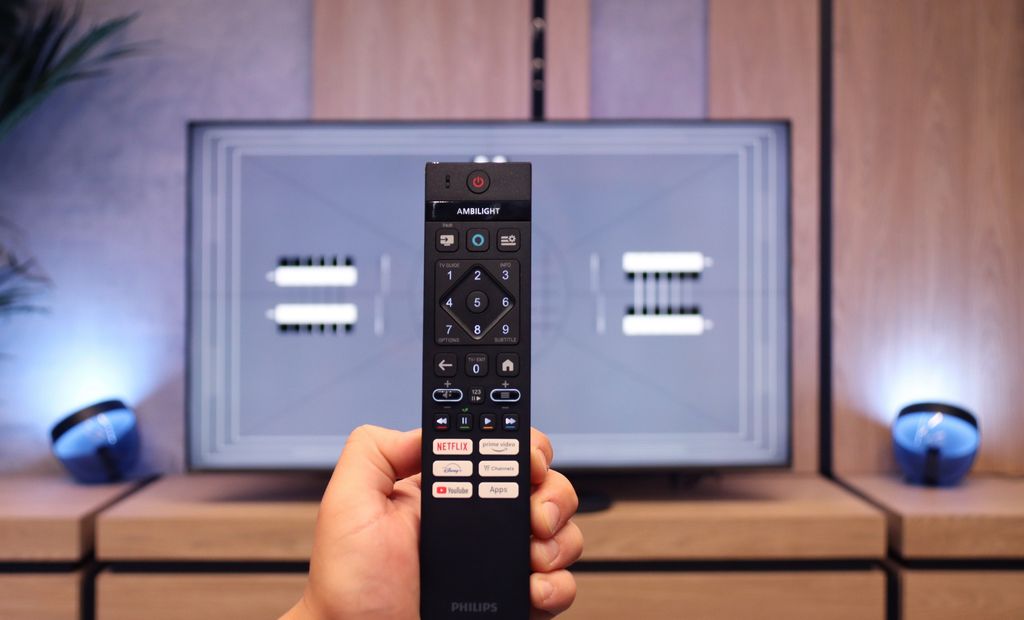

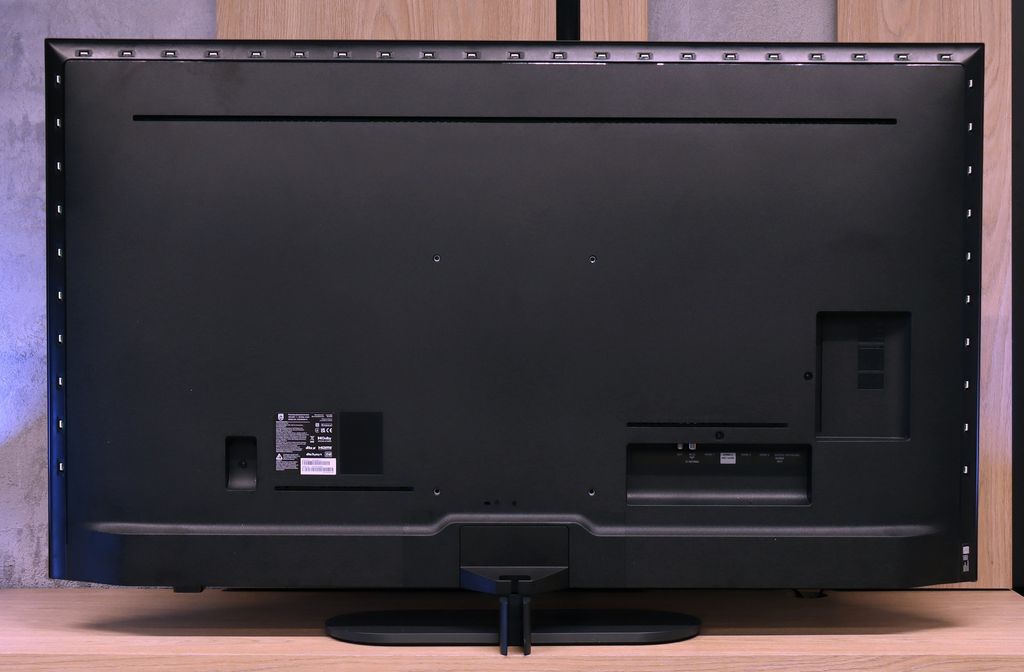
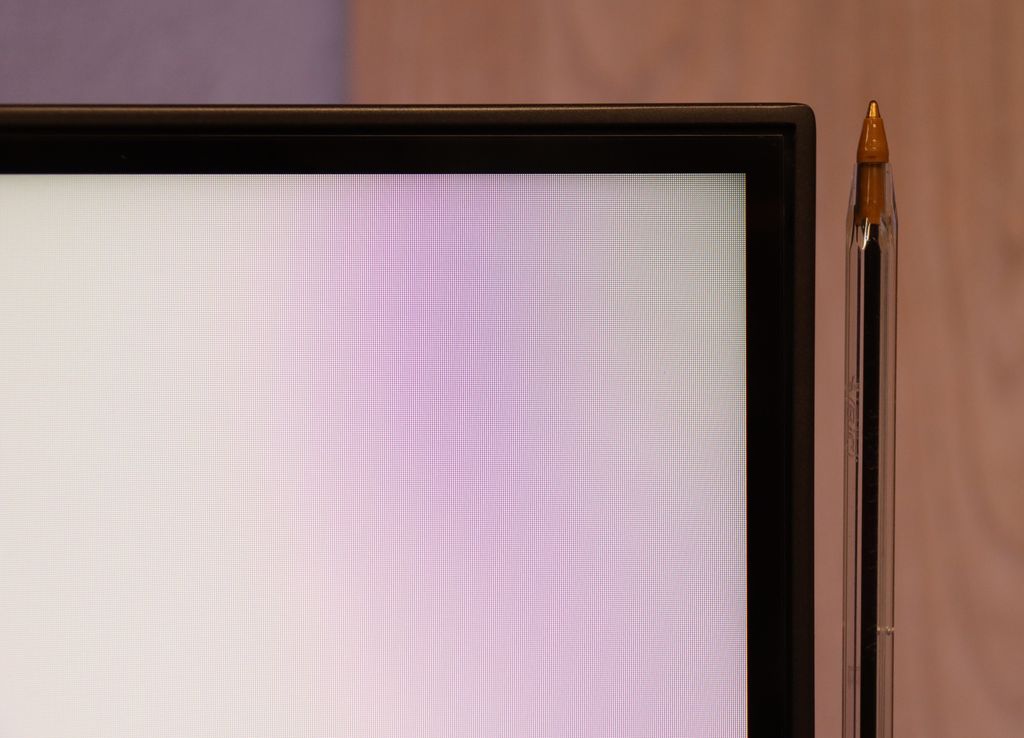
Contrast and black detail
5/10
6.2/10
Local dimming function: Yes, number of zones: 32 (4 x 8)
Local dimming function: No
Contrast:

Result
7,850:1

Result
4,150:1

Result
4,400:1

Result
2,500:1

Result
1,550:1

Result
6,000:1

Result
6,750:1

Result
7,300:1

Result
6,000:1

Result
6,800:1
Halo effect and black detail visibility:

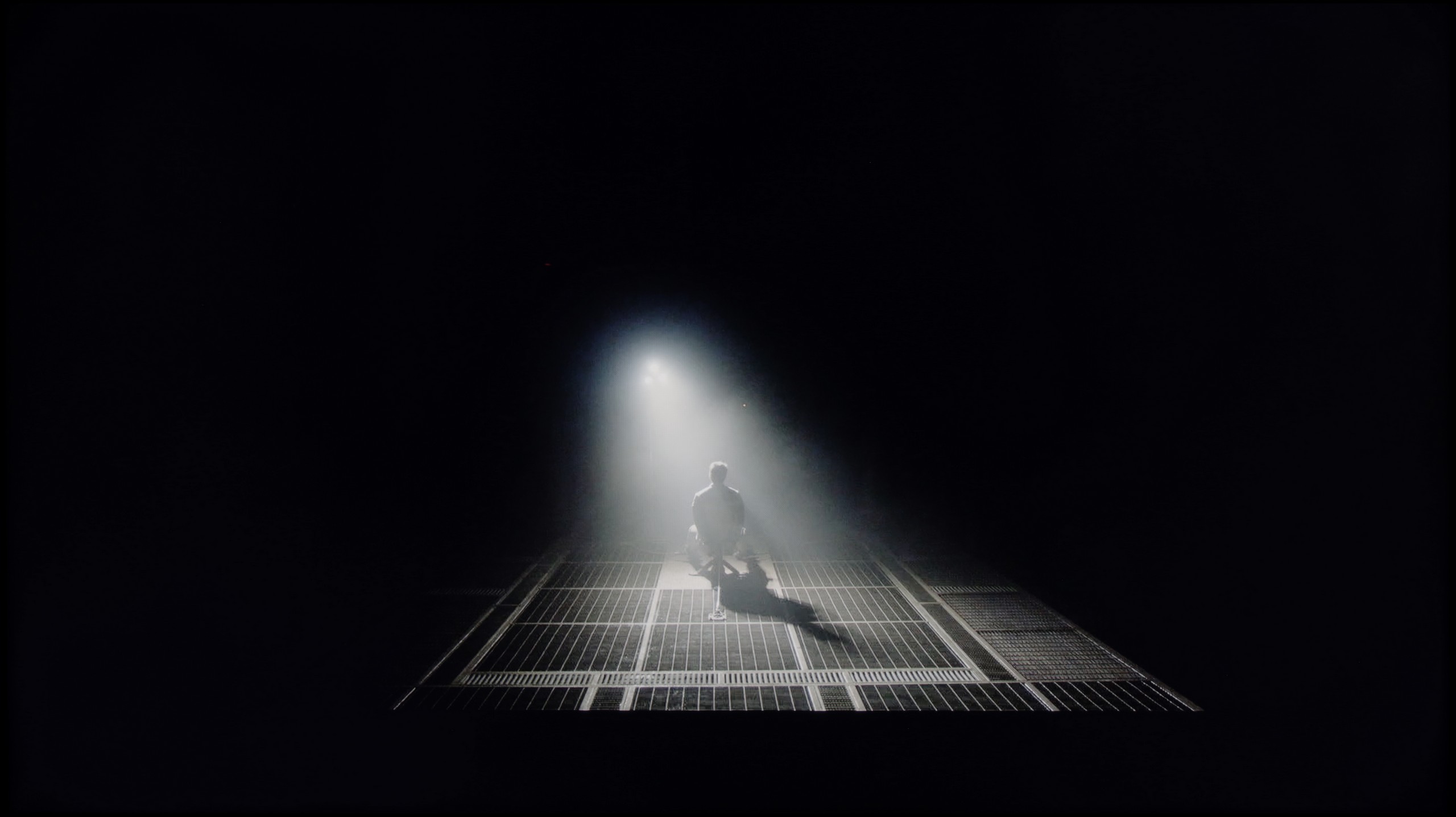
The tested Hisense E7NQ PRO in the 65-inch version features an IPS panel, which unfortunately is not known for high contrast. As a result, black appears slightly 'washed out' and at times takes on a silvery hue, which is clearly visible in our pictures. The manufacturer tried to address this by equipping the television with local dimming functionality. Unfortunately, in this 65-inch model, we only have 32 zones available, which, while somewhat helpful, is definitely not enough to achieve impressively high results—especially since the panel itself is unable to deliver incredibly deep blacks.
During testing, we observed highly variable results. In optimal conditions, it managed to reach around 7800:1, which can be considered decent; however, in more challenging scenes, the contrast dropped to around 2000:1. Such values are at best average and simply do not befit a television in this price range. Ultimately, while local dimming somewhat salvages the situation, it lacks truly deep, inky blacks and contrast that would leave a greater impression on us.
The PUS9060 is a television that, in this version, is equipped with a VA panel – and this is immediately evident in the contrast tests. In the tested images, the television achieved really good results, at around 6500:1. Such a result alone indicates that the television has a very decent black level. Unfortunately, the PUS9060 is not equipped with local dimming technology, and as a result, the black levels in the dark may appear to have a tint resembling navy blue. Fortunately, the The One series is known, among other things, for the famous Ambilight system, which significantly improves perceived contrast, and thus ‘tricks’ our eye into seeing a better black level. It may seem simple, but it is remarkably useful. Therefore, we recommend using this television in the evening with this system switched on. It doesn’t necessarily have to be multicoloured and track the picture – it can simply be white.
HDR effect quality
5.1/10
5.8/10
Luminance measurements in HDR:

Result
408 nit

Result
299 nit

Result
446 nit

Result
215 nit

Result
527 nit

Result
507 nit

Result
430 nit

Result
542 nit

Result
551 nit

Result
545 nit
Scene from the movie “Pan” (about 2800 nits)


Scene from the movie “Billy Lynn” (about 1100 nits)


Static HDR10


Dynamic: Dolby Vision
Dynamic: Dolby Vision


HDR luminance chart:
PHILPS PUS9060
Luminancja HDR
Luminance of RGB colors
Hisense E7NQ PRO
Luminancja HDR
Luminance of RGB colors
Based on the luminance chart, which indicates around 550 nits, it can be said that Hisense E7NQ PRO theoretically has the potential to somewhat "magically" enchant us with its image in HDR. While testing various scenes from films, we noticed that the television continually tries to balance maintaining appropriate brightness with preserving the deepest blacks possible. In favourable conditions – for instance, during a scene from “The Meg,” where the screen is flooded with bright light – this brightness can indeed impress us. In such moments, we feel that HDR actually adds that "something" to the image. Unfortunately, when more challenging shots appear on the screen with small, bright elements on a dark background, the situation looks significantly worse. The brightness then drops to 200-300 nits, which is decidedly too little to truly distinguish HDR from standard SDR.
It is clear that the television tries, but hardware limitations – mainly the limited number of local dimming zones – prevent it from fully spreading its wings. The final effect is therefore often quite uneven and just as mediocre as in the contrast tests. However, it deserves credit for its impressive coverage of the DCI-P3 colour gamut at 97%. Thanks to this, the television can display a truly wide range of colours, which, in suitable scenes, can give us at least a taste of the true HDR effect. It’s just a shame that the overall experience is not complemented by better control of brightness and contrast.
The One is bright enough to enjoy films recorded in HDR format. The average brightness of this model is around 500 nits, so we can easily expect a pleasant viewing experience for films from streaming platforms. Of course – it could always be better, because when it comes to brightness, you can never have too much for this type of content. Unfortunately, a disappointing surprise may be the coverage of the DCI-P3 colour palette offered by the PUS9060. Although the manufacturer boasts about using a QLED filter here (in reality, it’s PFS LED), it's hard to speak of any positive effects from its operation. 85% coverage of the DCI-P3 palette is certainly not a level to be proud of in 2025 – particularly in a television advertised as QLED.
Factory color reproduction
5/10
5.5/10


Factory Mode
After calibration


Factory Mode
After calibration
When we took our copy of Hisense E7NQ PRO out of the box, we immediately began to check the available picture modes. Among them, the Filmmaker mode seemed the most promising, although it too was not without its flaws. With standard SDR content, we noticed a clear tendency for excessive red enhancement, which made the image unnaturally warm. This was particularly evident in the comparative photo attached below. Conversely, when we switched to HDR content, the situation went in the opposite direction. This time, blue was dominant, and red was scarce, resulting in a cool effect, at times almost "shop-like" — although not as drastic as in those modes that are actually intended for display in exhibitions. As a result, in our tests assessing colour reproduction, these disturbances in colour balance led to significant errors.
Additionally, the television had issues with reproducing brightness characteristics. At lower resolutions, it noticeably brightened the darkest elements of the image, and with HDR content, the brightness curve (eotf) simply wouldn't conform as it should. Initially, the television excessively darkened the smallest details, only to then overly brighten larger areas. Fortunately, the E7NQ PRO provides us with plenty of calibration tools, so knowing that there is potential within it, we decided to take matters into our own hands and try to adjust it to eliminate these problems.
We tested the PUS9060 in the best factory mode available – of course, we are referring to the movie mode. Unfortunately, the best in this case does not mean good. The image in this mode was distinctly yellowish and shifted towards orange tones. The white balance on this television was definitely too warm, giving the entire scene an artificial, somewhat “tanned” appearance. This led to significant colour errors, which in the worst cases exceeded a delta E value of 6 – thus they were visible to the naked eye. The situation was reversed in HDR mode, where the image became too blue and too cool in perception. Additionally, there was a slight increase in brightness – the gamma curve and EOTF suggested that the television slightly brightened the image, which was also evident in the comparative photo below.
Color reproduction after calibration
7.1/10
8/10




Thanks to the tools available in E7NQ PRO, we managed to extract quite a decent image from it, especially with lower quality content. After refining the white balance of the SDR materials, the colours look much more natural, and what we see on the screen seems closer to the vision that the manufacturer intended to present. Additionally, we improved the brightness characteristic (Gamma), which means the television is no longer prone to excessive brightening, and everything presents itself distinctly better than before our intervention.
We also managed to achieve some results with HDR materials, although it isn’t quite as rosy here. Indeed, the white balance has approached an acceptable level, but the problem lies elsewhere. It concerns the EOTF curve, which is the way the television manages brightness and tonal range of the image. At first glance, it might seem that the biggest issue only relates to mid-tones being overly brightened. However, after more detailed testing and enabling the filters for displaying the EOTF curve, it becomes apparent that the receiver tends to brighten the entire screen. This appears to be a limitation arising from the small number of local dimming zones and generally modest brightness management capabilities. Such hardware limitations are simply insurmountable. Despite this, after our calibration, the image is noticeably better than at the outset. One just needs to be aware that in terms of contrast and brightness management, this model has its limits, which even good calibration cannot fully overcome.
Thanks to calibration in film mode, we managed to completely eliminate the yellow-orange tint, which significantly improved the perception of the entire scene. The image has become much more visually pleasing, although it is still far from reference settings. It may now appear slightly bluish, but it is still a definite improvement compared to the factory settings.
Unfortunately, we were not able to significantly improve the brightness characteristics, but this is already a matter of the television's design - the absence of local dimming limits the ability to precisely manage brightness. The PUS9060 simply cannot dynamically adjust luminance as more advanced models do. Nevertheless, after calibration, the overall experience is much more enjoyable, especially with film material.
Smoothness of tonal transitions
9.2/10
8.9/10












We must honestly admit that the fluidity of tonal transitions in this television is among the best we have had the opportunity to test in 2024. Even in really demanding scenes, we hardly notice any distinct "steps" between colours. Of course, with a keen eye, one can detect minor flaws, but those are at a level that is virtually microscopic. You really need to have a very "alert" eye to catch them. This, in turn, means that while watching even the most complex shots in a full palette of colours, one can simply focus on the story and visual experiences without the irritating, artificial effect of posterisation.
PHILIPS PUS9060 handles tonal transitions excellently – we did not notice any serious problems with colour blending. The gradation looks natural, without unpleasant bands or harsh transitions. We could only nitpick the most challenging dark scenes – that is where minimal imperfections appear, but overall it looks quite OK, especially for the class of equipment. For most users, the effect will be more than satisfactory.
Image scaling and smoothness of tonal transitions
6/10
6.7/10
Smooth transition function


Image without overscan on the SD signal


When it comes to the function of smoothing tonal transitions in lower quality materials, the "smooth and gradient image" feature in Hisense E7NQ PRO unfortunately does not impress. At the lowest setting, the change is hard to notice at all – it is rather a cosmetic improvement. Switching to "Medium" mode yields a noticeable effect, but it is still nothing special, and in the process, the television begins to excessively interfere with other elements of the image, which can look unnatural.
Moreover, image scaling is rather average. On the test screen, where a portrait of a model and text are displayed, slight jagged edges are visible, making the overall appearance less smooth and aesthetically pleasing than one would expect in this class of device. It's simply difficult to talk about truly effective improvement in the quality of lower resolution.
In the PUS9060, we find yet another version of the image processor called by Philips the P5 Perfect Picture, which is designed to improve the image – especially the imperfect one. The television features a distortion reduction function, which serves to smooth tonal transitions, i.e., those "colour joins" we mentioned earlier. This function does this very effectively – there is no noticeable harsh gradation of colours, but unfortunately, it works so aggressively that it sometimes dulls desired elements, such as the textures of materials or film grain. So one can consider this a certain compromise. We would rather not recommend using this function for films, but for more casual content – e.g., YouTube or standard television – it is perfectly fine.
The P5 processor also aims to improve the quality of lower-resolution images and does so quite effectively. The test image with the model is very soft – sometimes overly so – but this can be easily adjusted with the sharpness slider to match personal preferences. It is also pleasing that the television does not cut off edges in SD materials – which unfortunately still occurs in some TV models.
Blur and motion smoothness
7/10
7.5/10

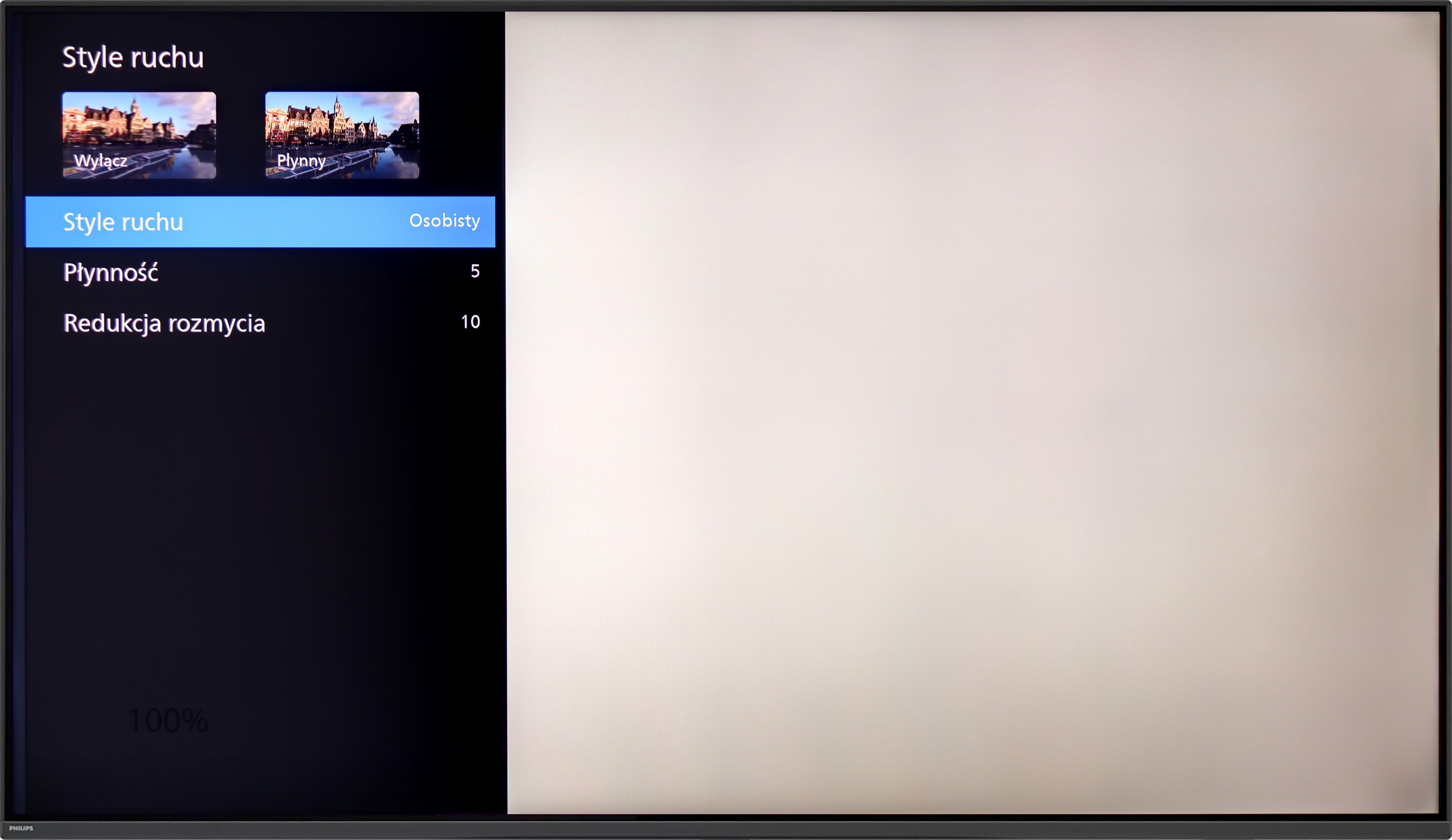
Blur (native resolution, maximum refresh rate):






Thanks to the use of a 144 Hz panel, E7NQ PRO performs excellently with nearly every type of content. Whether we are watching fast-paced matches, dynamic games or action films – the smoothness of motion leaves a good impression. When it comes to films, the manufacturer has equipped the television with two key tools: "motion blur reduction" and "judder reduction". Each of these functions can be adjusted on a scale from 1 to 10.
At lower values, the processing is subtle, barely noticeable, and gently smooths out motion without compromising the cinematic quality of the image. The higher we move up the scale, the more the television interferes with the presented material, smoothing out motion more intensely, and consequently – minimising any judders or micro-cuts. Conversely, the highest settings can resemble the so-called "soap opera effect", which makes the image appear excessively smooth, slightly losing its filmic atmosphere. However, with such a scale, we can find a happy medium, adjusting the smoothness of motion to our own preferences.
PHILIPS PUS9060 is equipped with a 4K panel with a refresh rate of 144 Hz, so we can confidently say that it is suitable for both watching sports and playing games. And indeed, it is. But what about films that are most often recorded at 24 frames? As with most of the televisions we tested with a refresh rate of 120 Hz and above, the PUS9060 offers two sliders in the motion smoothness options. The “Smoothness” slider allows you to adjust the effect in films – you can set the image to be smoother, resembling a theatrical effect (higher settings), or more cinematic, with a slight "jump" in frame rate (lower settings). Additionally, there is a function called "Motion Blur Reduction," which limits blurring – and this is a very useful feature, especially when watching sports.
Console compatibility and gaming features
8.5/10
9.8/10
- ALLM
- VRR
- VRR range48 - 144Hz48 - 144Hz
- Dolby Vision Game Mode
- Correct implementation of HGIG
- 1080p@120Hz
- 1440p@120Hz
- 4K@120Hz
- Game bar

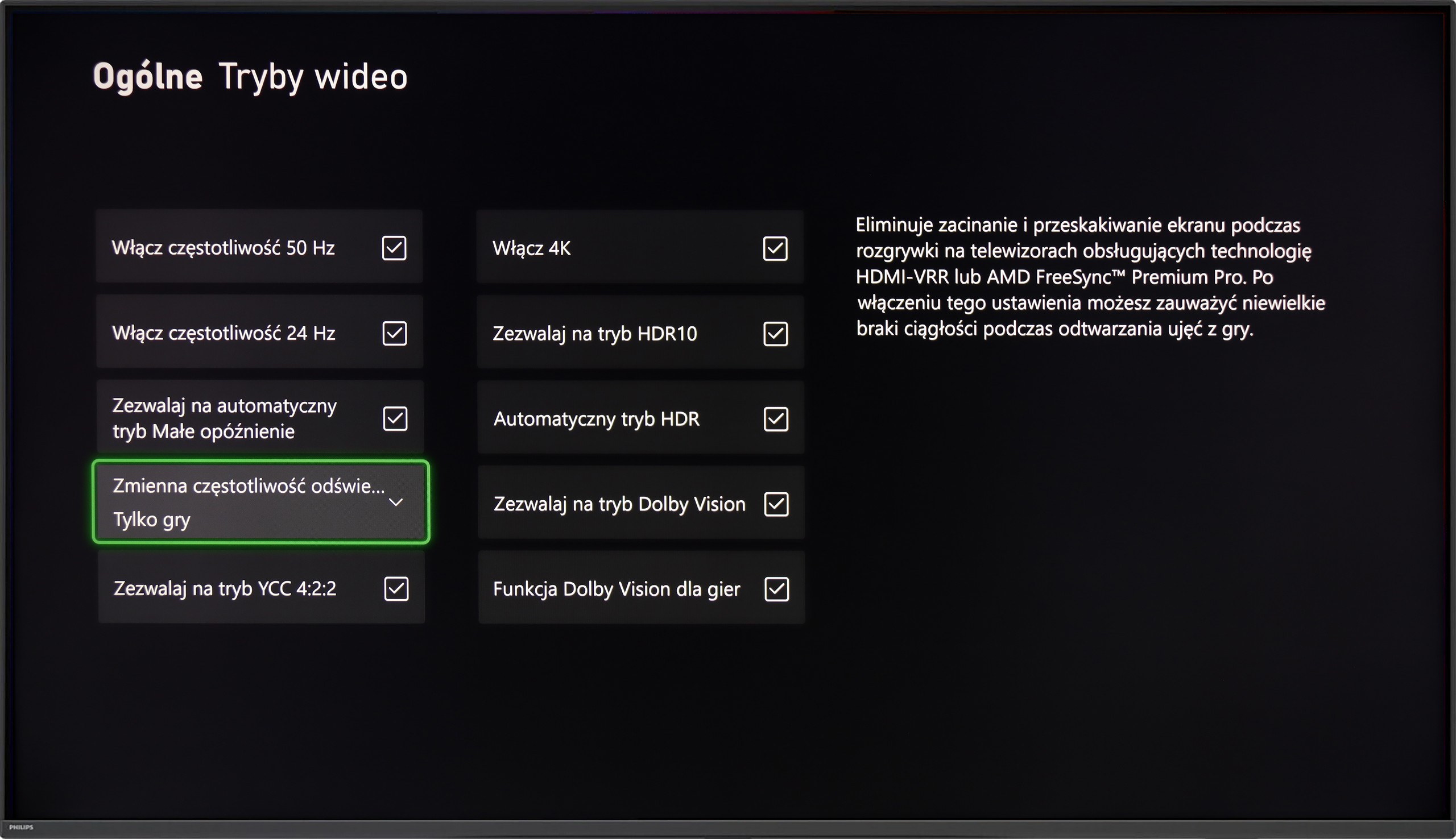



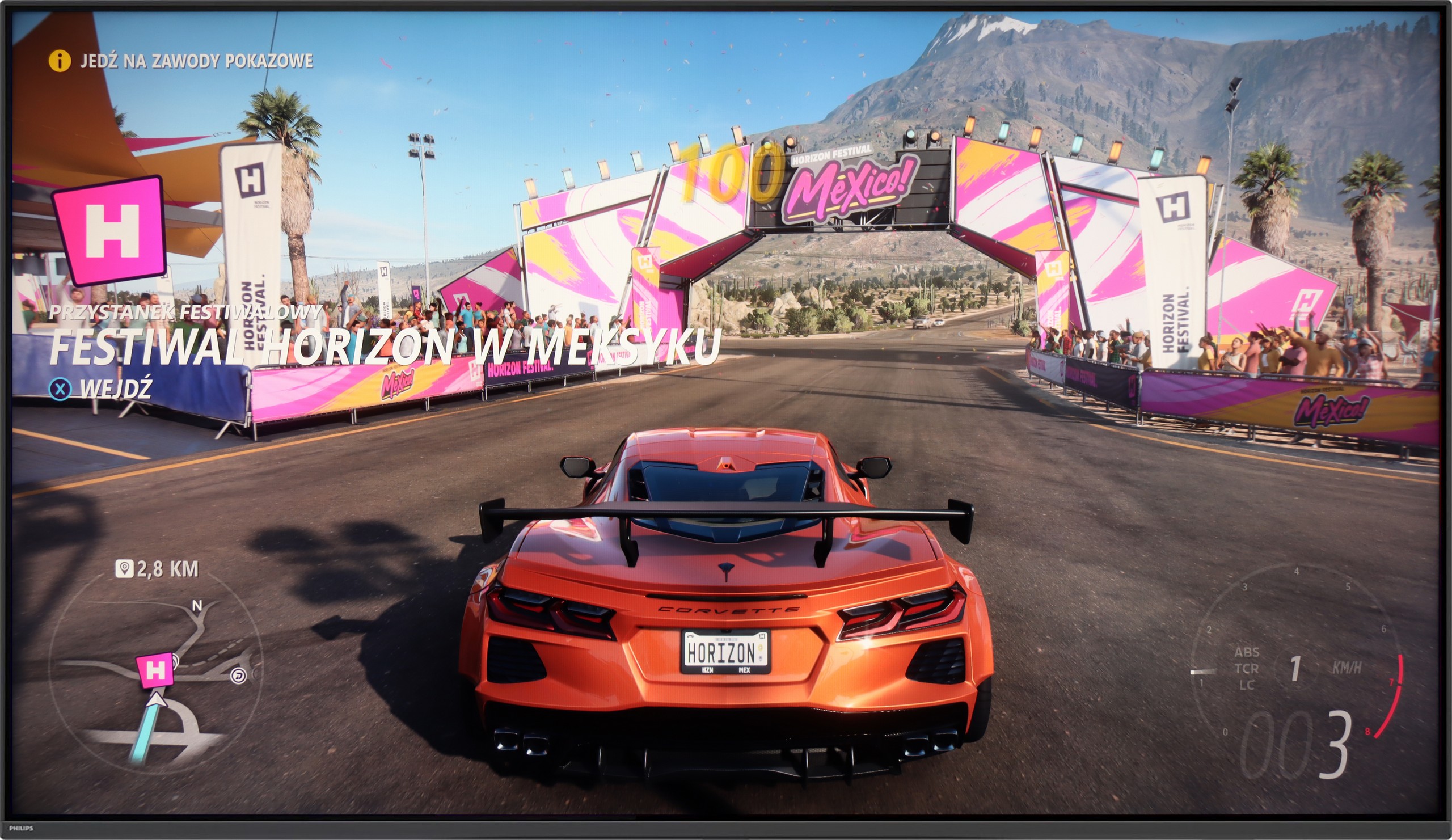

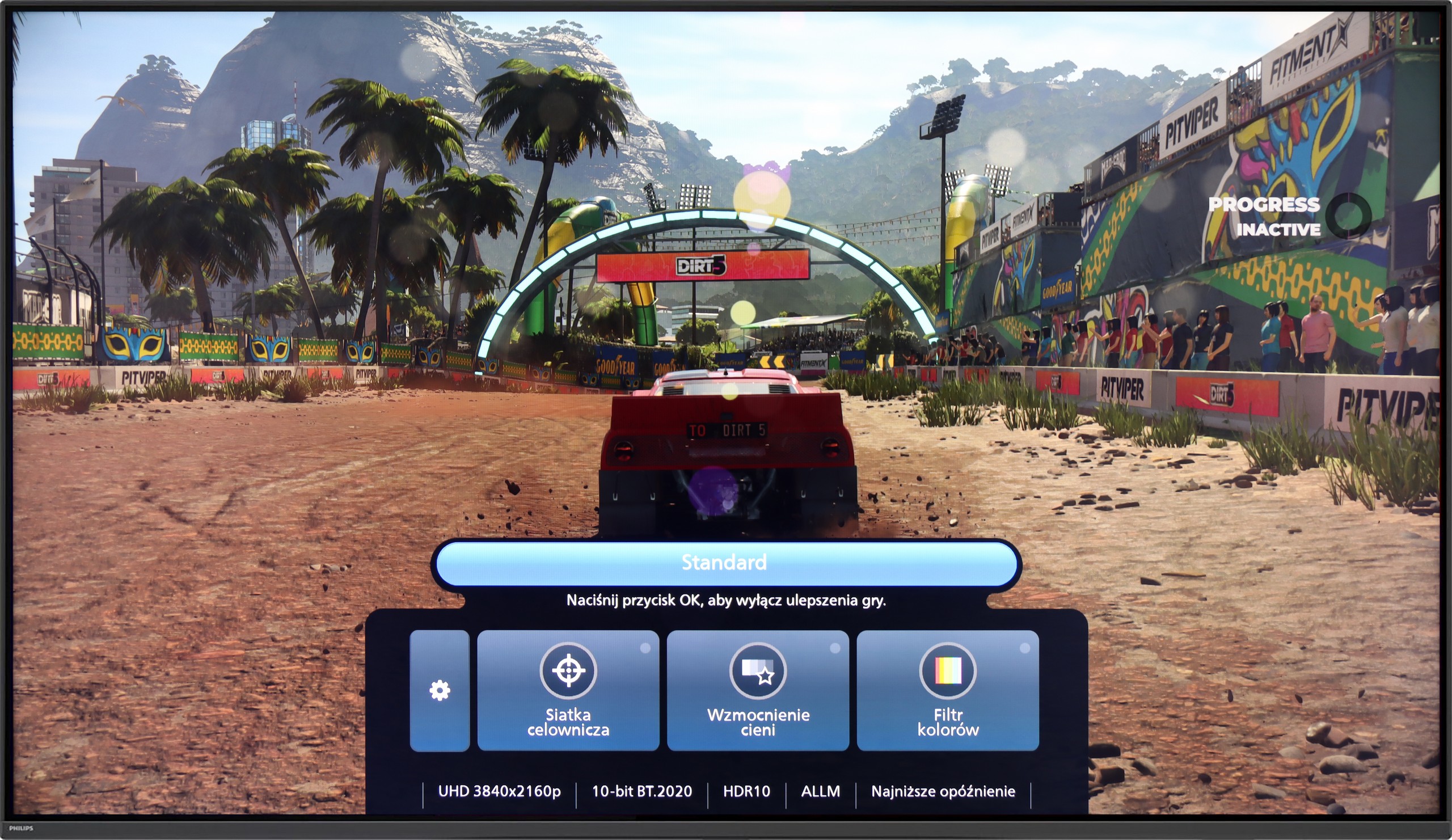
If we sometimes enjoy turning on the console and immersing ourselves in the world of games for long hours, E7NQ PRO can make quite an impressive impact. Thanks to the 144 Hz refresh rate, gameplay is surprisingly smooth, and support for HDMI 2.1 and VRR ensures that the picture doesn't 'tear' even during the most dynamic actions. Additionally, there's ALLM, which automatically sets the lowest latency as soon as we switch to the console – so we don't have to fiddle with the options ourselves.
A major plus is also the ability to run games in Dolby Vision, making colours and contrast simply look better. Hisense has also added a clear 'gamebar', allowing us to constantly monitor the most important parameters and change settings without leaving the game. The only thing we might regret a bit is the lack of HGIG support. While it may not be a crucial element, it could matter to some gamers aiming for the most faithful representation of the creators' vision. Nevertheless, in practice, the E7NQ PRO performs excellently and provides truly enjoyable gaming experiences.
PHILIPS PUS9060 is a true gaming monster – it has practically everything you could expect from a modern gaming television. There's VRR, there's ALLM, and on top of that, there's the implementation of HGiG, which helps to set HDR in games the way the developers intended. The television supports every possible resolution at 120 Hz, including 1080p, 1440p, and full 4K – so regardless of whether you're gaming on Xbox, PS5, or PC, everything works as it should. It also features a simple Game Bar, which is a special menu for gamers that allows you to quickly check if the ALLM mode is indeed working in low-latency mode.
And of course – Ambilight TV. Let’s be honest – without LED lights at the back, it’s not really a proper gaming setup. 😉 The multicoloured backlighting can really enhance the atmosphere, especially in the evening. It may not be to everyone's taste, but younger gamers will be thrilled – because it just looks impressive.
Input lag
9.9/10
9.5/10
SDR
HDR
Dolby Vision
In this regard, Hisense E7NQ PRO really delivers. At a frequency of 60 Hz, we recorded around 15 ms, and at 120 Hz, the latency drops even to 6 ms, allowing for very quick response and smooth control in games. It is also worth mentioning that even in Dolby Vision mode, the input lag does not increase drastically. This means we can enjoy better image quality without having to sacrifice responsiveness, which will certainly please any avid gamer.
The One from 2025 performs very well in terms of responsiveness. An input lag of around 9 ms at a 120 Hz signal and 18 ms at 60 Hz are values that ensure a quick and smooth response to every movement of the controller. Playing even dynamic action titles or demanding e-sports games is completely comfortable. The situation is slightly worse when it comes to Dolby Vision – here the delay increases to around 33 ms. This is still an acceptable level for most “casual” gamers, but more demanding users may notice a slight slowdown in response. Therefore, in our opinion, a better choice would be the classic HDR10 mode with HGiG active. In this model, it has been implemented correctly and not only avoids delays but also eliminates potential problems with brightness and detail reproduction that sometimes occur in Dolby Vision.
Compatibility with PC
7.6/10
8.8/10

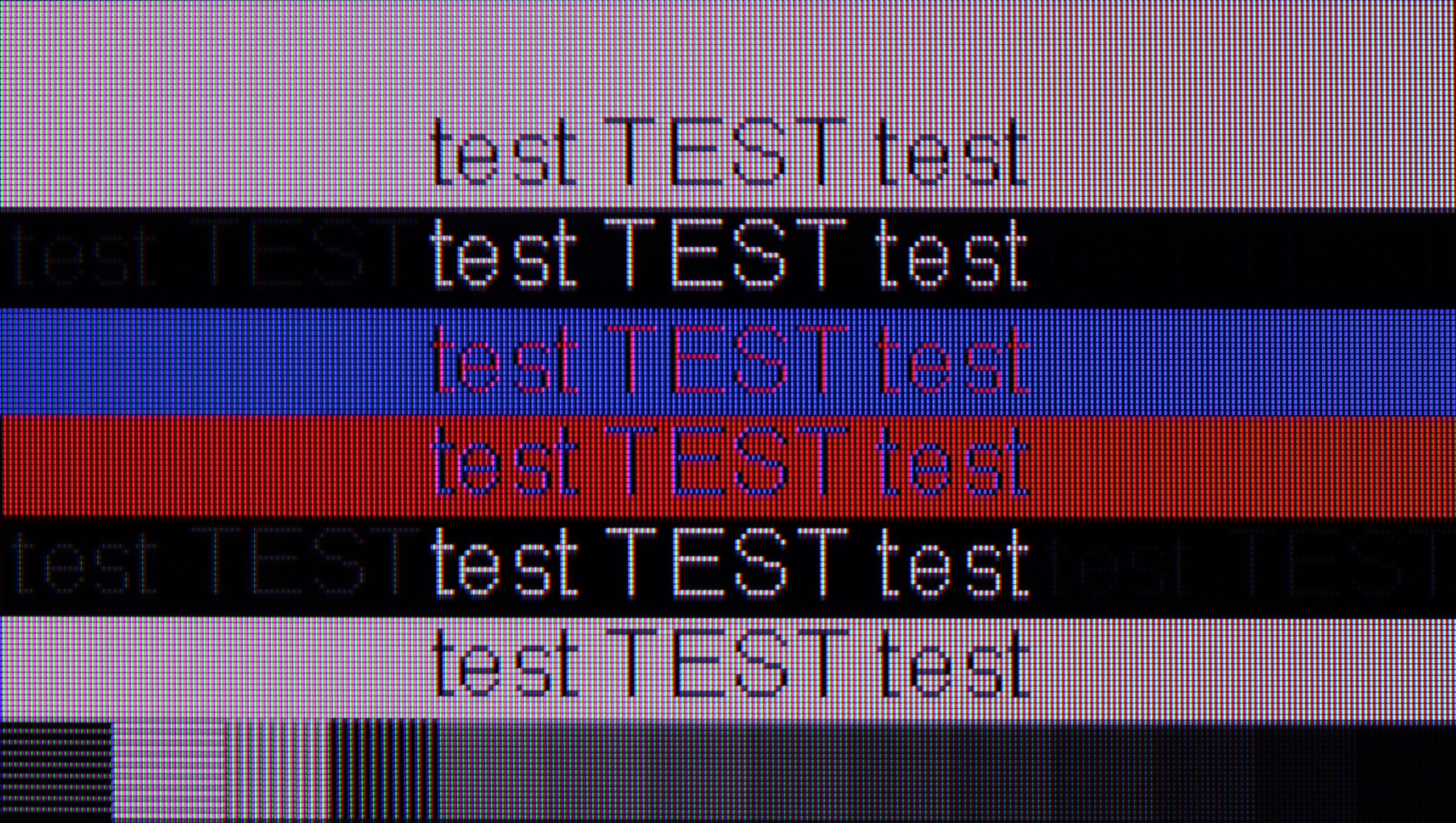
By connecting the E7NQ PRO to a computer, we will have no reason to complain. The overall readability of the fonts is quite good, although with very thin, horizontal lines (the so-called “serifs” of letters) we noticed a slight dimming. This is not a major issue, but it's worth mentioning if we plan to spend long hours in text editors or browsers.
As for gaming on PC, the television shows its true colours. Support for G-Sync, connection to a 144 Hz panel, and low input lag ensure that even the most demanding titles run smoothly and responsively. As a result, we have a screen that will work well not only with a console but also as a solid “window” to the world of PC entertainment.
Using the computer on the PHILIPS PUS9060 should be pure pleasure. As we mentioned earlier, the television performs excellently for gaming on a console, but it also handles well in combination with a computer. It offers a refresh rate of 144 Hz, G-Sync Compatible works correctly, and it has low input lag - making it reasonable to consider this model as a fully-fledged PC monitor for gaming.
In terms of daily work, it is also good. Chroma 4:4:4 has been implemented correctly, so fonts are sharp and readable. We did not notice any issues with text clarity, although with very dark backgrounds, one can observe a slight dimming of the letters with a slight edge doubling. In practice, however, this should not bother anyone, even when working with text.
Viewing angles
6.5/10
3.4/10
In the case of Hisense E7NQ PRO, the viewing angles are definitely a strong point, thanks to the IPS panel. This means that when we look at the screen even from a significant angle, the colours and brightness do not "wash out" as much as they do in televisions with a VA panel. Of course, compared to OLED or QD-OLED screens, where the image remains practically unchanged from every angle, IPS still falls short. Nevertheless, among LCD televisions, it is hard to find a solution that guarantees viewing angles as good as those offered by IPS. Unfortunately, everything comes at a cost – in this case, one has to come to terms with average blacks and lower contrast.
The PUS9060 model is equipped with a VA panel, which – as is usually the case – does not perform very well when viewing at an angle. With a greater deviation from the axis, the screen brightness noticeably decreases, and colours lose saturation. Unfortunately, this is a typical compromise compared to IPS panels, which offer better viewing angles but have significantly weaker contrast and blacks. Here the situation is reversed – blacks are good, but angles are very average. Of course, with standard straight-on viewing, there is no problem, but in a larger living room or with a larger TV, where someone is sitting far to the side or we are looking at the edges of the screen, the differences will be noticeable.
TV efficiency during daytime
6.2/10
6/10

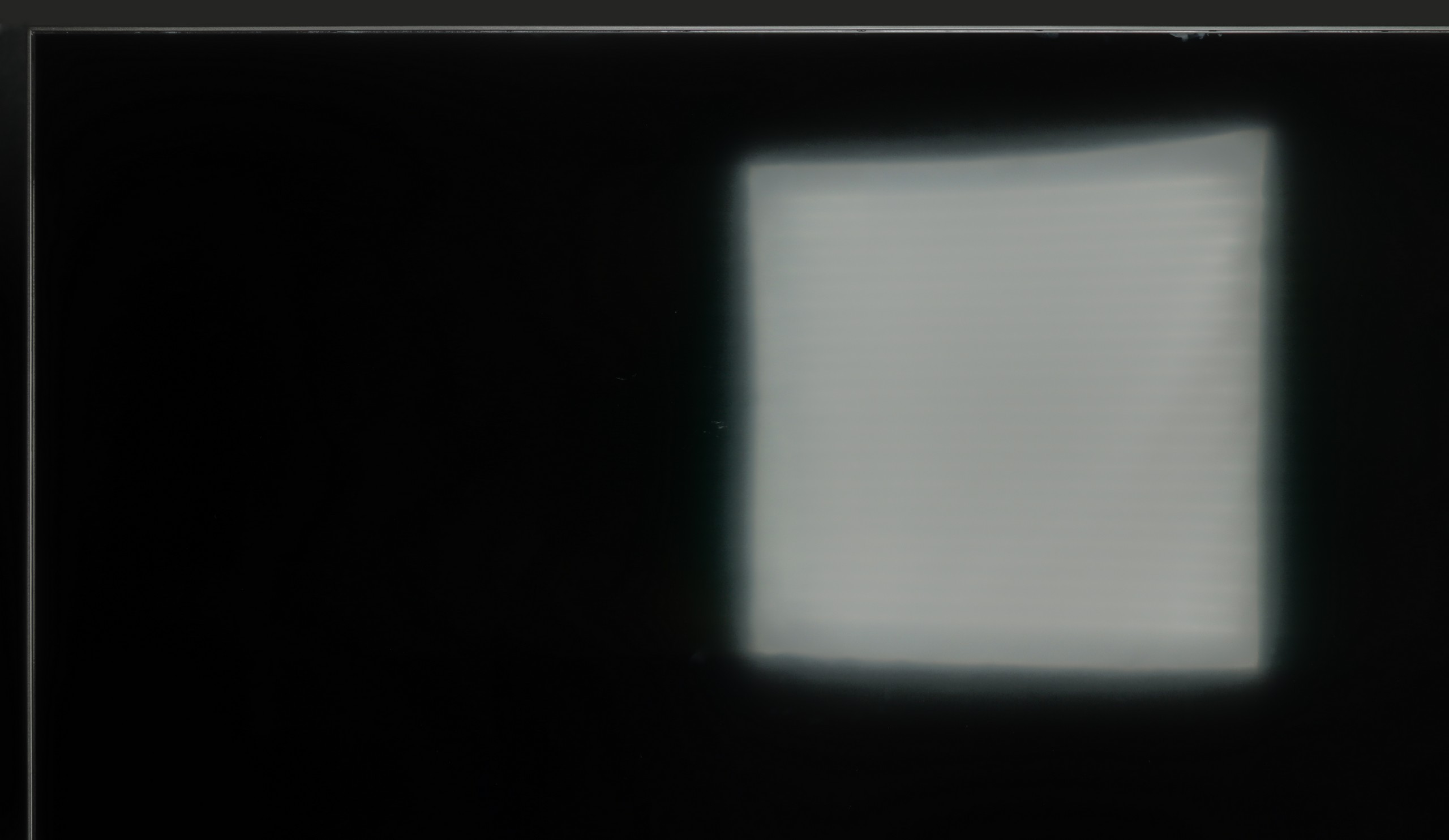


Matrix brightness
Average luminance SDR
PHILPS PUS9060: 495 cd/m2
Hisense E7NQ PRO: 478 cd/m2
On a bright day, E7NQ PRO performs quite well. The "satin" display diffuses light effectively, preventing reflections and glares from turning into distracting "spots" on the screen. With an average brightness of around 500 cd/m², you can comfortably watch television in a sunlit room without much struggle to see details or clear content. It's perhaps not at the level of the highest premium models, but in everyday use, it still performs quite decently.
The Philips PUS9060 performs quite well in a bright room. The satin finish of the panel effectively reduces reflections and glare, so watching in a room full of lamps or with large windows should not pose major problems. It's also a plus that the blacks do not wash out excessively, and the picture still retains decent contrast. The situation could be even better if the television offered higher brightness. About 500 nits is a decent result, but in very challenging lighting conditions, it may prove insufficient.
Details about the matrix
Subpixel Structure:

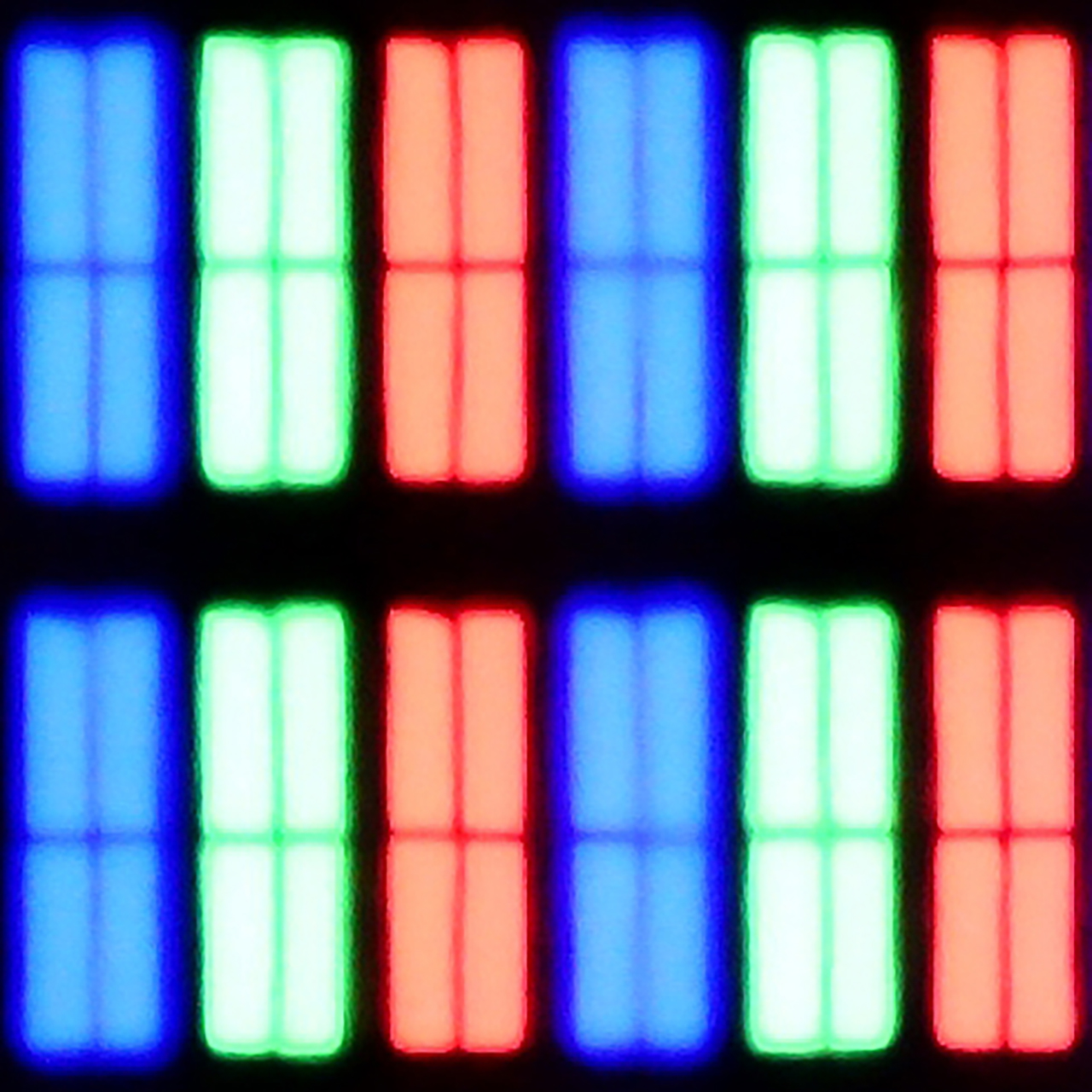
Panel uniformity:


TV features
8.9/10
6.3/10
- HDMI inputs2 x HDMI 2.0, 2 x HDMI 2.1 48Gbps0 x HDMI 2.0, 4 x HDMI 2.1 48Gbps
- Other inputsRCA (Chinch)Toslink (Optical audio)
- OutputsToslink (Optical audio), eARC (HDMI), ARC (HDMI), Mini-Jack (Headphones)Toslink (Optical audio), eARC (HDMI), ARC (HDMI), Mini-Jack (Headphones)
- Network InterfacesWi-Fi 2.4GHz, Wi-Fi 5GHz, Ethernet (LAN) 100MbpsWi-Fi 2.4GHz, Wi-Fi 5GHz, Ethernet (LAN) 100Mbps
- TV receptionDVB-T, DVB-T2, DVB-S, DVB-S2, DVB-CDVB-T, DVB-T2, DVB-S, DVB-S2, DVB-C
Classic features:
- Recording to USB (terrestrial TV)
- Recording programming
- Picture in Picture (PiP)
- RF remote control (no need to aim at the screen)
- Backlit remote control
- Teletext
- Audio only mode
- Possibility to connect Bluetooth headphones to the TV
- Possibility to simultaneously use Bluetooth headphones and the TV speaker
Smart features:
- AirPlay
- Screen mirroring (Windows Miracast)
- Wyszukiwanie głosowe
- Voice search in native language
- Ability to connect a keyboard and mouse


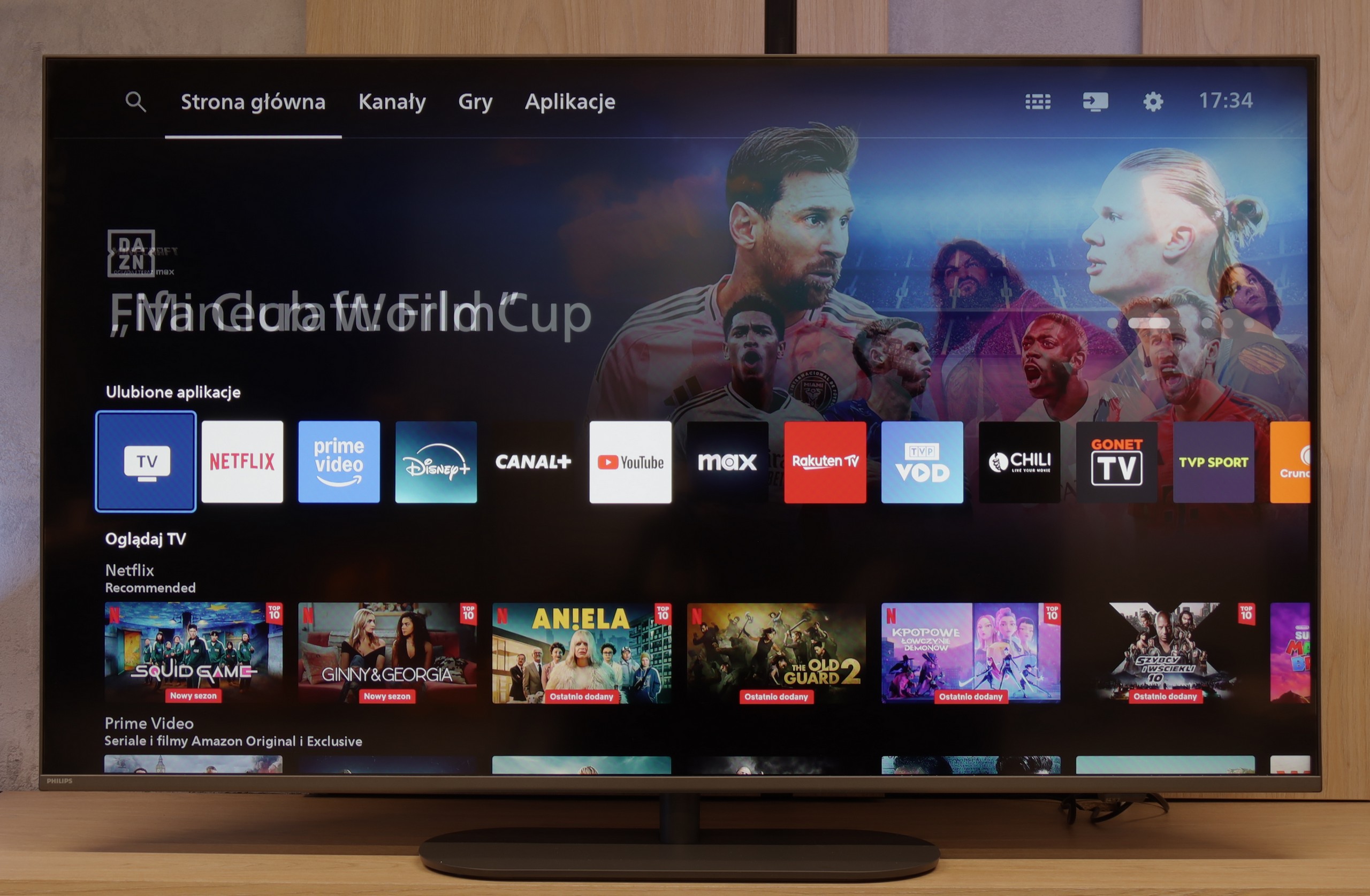
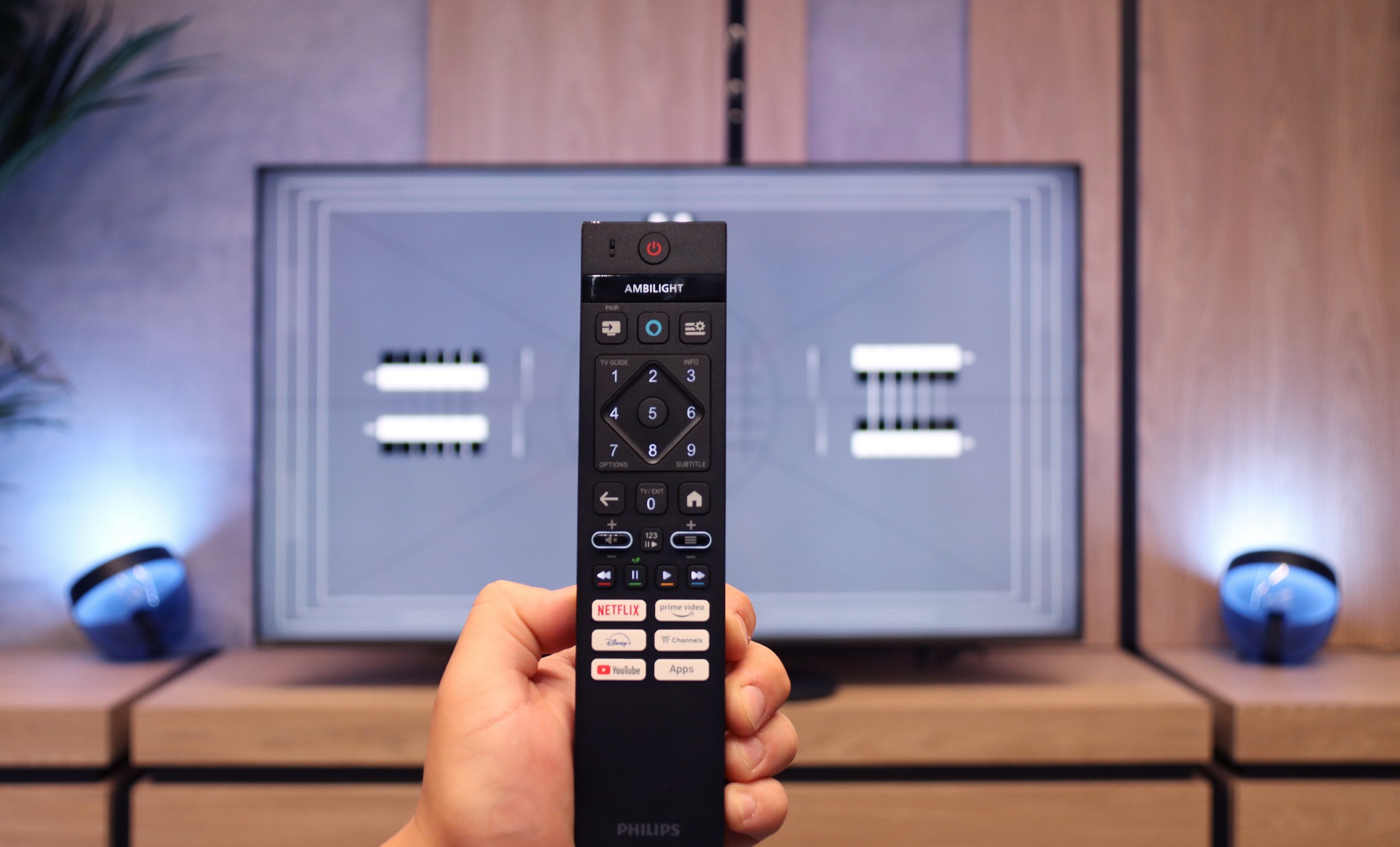

Hisense E7NQ PRO operates on the VIDAA system, which has recently made significant progress. Most popular applications can be found here, although unfortunately, some music platforms like Spotify or Tidal are missing. Nevertheless, navigating the menu is quite enjoyable, and the responsiveness is at a satisfactory level. Yes, there are occasionally minor "stutters," but this is not something that will overwhelm our daily usage experience.
On the plus side, we can appreciate the support for voice search in Polish, which makes it easier to find favourite content without the tedious process of typing letters one by one. The television also offers plenty of additional options: we can record programmes, use AirPlay and mirroring, as well as enjoy extensive wireless connectivity options (Wi-Fi and Bluetooth). Perhaps it lacks a backlit remote or Picture-in-Picture (PiP) mode, but these are rather niche features, so few will truly feel their absence. In everyday use, we simply have a solid foundation of useful tools and convenient solutions.
Classic Features of TheOne TV:
When it comes to these "classic features," the PUS9060 performs quite mediocrely. Of course, we will find everything basic here; there's EPG, teletext, and the ability to connect headphones via Bluetooth. But unfortunately – it lacks the USB recording function, and there's no PiP (picture in picture) mode, which is becoming rarer but is still useful. On the plus side, the remote control with a numeric keypad is modern, backlit, and visually impressive. It's just a shame that it's still a classic infrared model, so to use it, you have to aim it directly at the screen. It's a bit disappointing because with such a modern appearance, it really called for Bluetooth (RF) control.
Smart TV:
Most Philips TVs from 2025 operate on the Titan OS system, which debuted relatively recently – and unfortunately, this still comes with certain problems. The system itself runs quite smoothly – definitely better than in cheaper Philips models – and it did not cause us issues when using features like screen mirroring or AirPlay (which is not so obvious even in 2025). The biggest downside of Titan OS is still the rather mediocre access to applications (list below). The advantage is that we can bypass this by connecting a keyboard and mouse to the TV and using the built-in browser, but it's not the most comfortable solution – rather a makeshift one.
Playing files from USB
5.2/10
7.9/10
Supported photo formats:
Maximum photo resolution:


If we are counting on comfortable viewing of films with subtitles directly from a pendrive, we may unfortunately be disappointed. Just like with the previously tested A7NQ, we encounter a rather peculiar situation here: the television does not display subtitles, even if we correctly place them on the device and try various formats. Paradoxically, we find options to change the colour and appearance of the font, but as they say – what's the point if we still won't see anything?
In the case of other files, such as photos or music, the E7NQ PRO manages without major problems, playing the most popular formats without a hitch. Unfortunately, for those who would like to use the television as a multimedia player, the lack of functioning subtitles is quite a nuisance.
The built-in player in the PUS9060 played practically most popular audio and video formats, so it's really hard to find fault here. Movies in popular containers, music, and photos – everything worked without any problems.
The only potential drawback might be the limited number of supported subtitle formats and the randomly selected photo resolutions that the television can read. But aside from that, most everyday users will be perfectly fine without the need to connect a computer or console to display their files from a pen drive.
Apps
7.7/10
6.2/10














































Sound
7/10
6.6/10
- Subjective sound quality:7/106.6/10
- Dolby Digital Plus 7.1:
- Dolby True HD 7.1:
- Dolby Atmos in Dolby Digital Plus (JOC):
- Dolby Atmos in Dolby True HD:
- DTS:X in DTS-HD MA:
- DTS-HD Master Audio:
When it comes to the built-in speakers, Hisense E7NQ PRO pleasantly surprised us. Of course, it is not on the level of a proper soundbar or home cinema system, but in everyday conditions, it performs quite well. During our tests, the dialogues remained clear, and the sound was sufficiently clean and spacious, so there was no immediate need to invest in additional audio equipment.
It also deserves credit for supporting multiple audio formats – from Dolby Atmos to the less common DTS:X. As a result, if we come across the right source materials, we can expect a more immersive, spatial experience. Although in terms of sound, it is still primarily at the level of a decent basic setup, Hisense E7NQ PRO should satisfy most users who simply want to turn on the television and hear clear, unblemished sound.
The sound from the PHILIPS PUS9060 was generally pleasant, although it is hard to call it sensational. The tested unit had built-in audio in a 2.0 configuration with a total power of 40 W, which is entirely sufficient for everyday viewing. Fortunately, the television supports most popular audio formats, so if someone connects a soundbar or home cinema, they can confidently expect full support for Dolby Atmos or DTS – without any hassle or loss of quality. For true audio fans, this is definitely good news.


